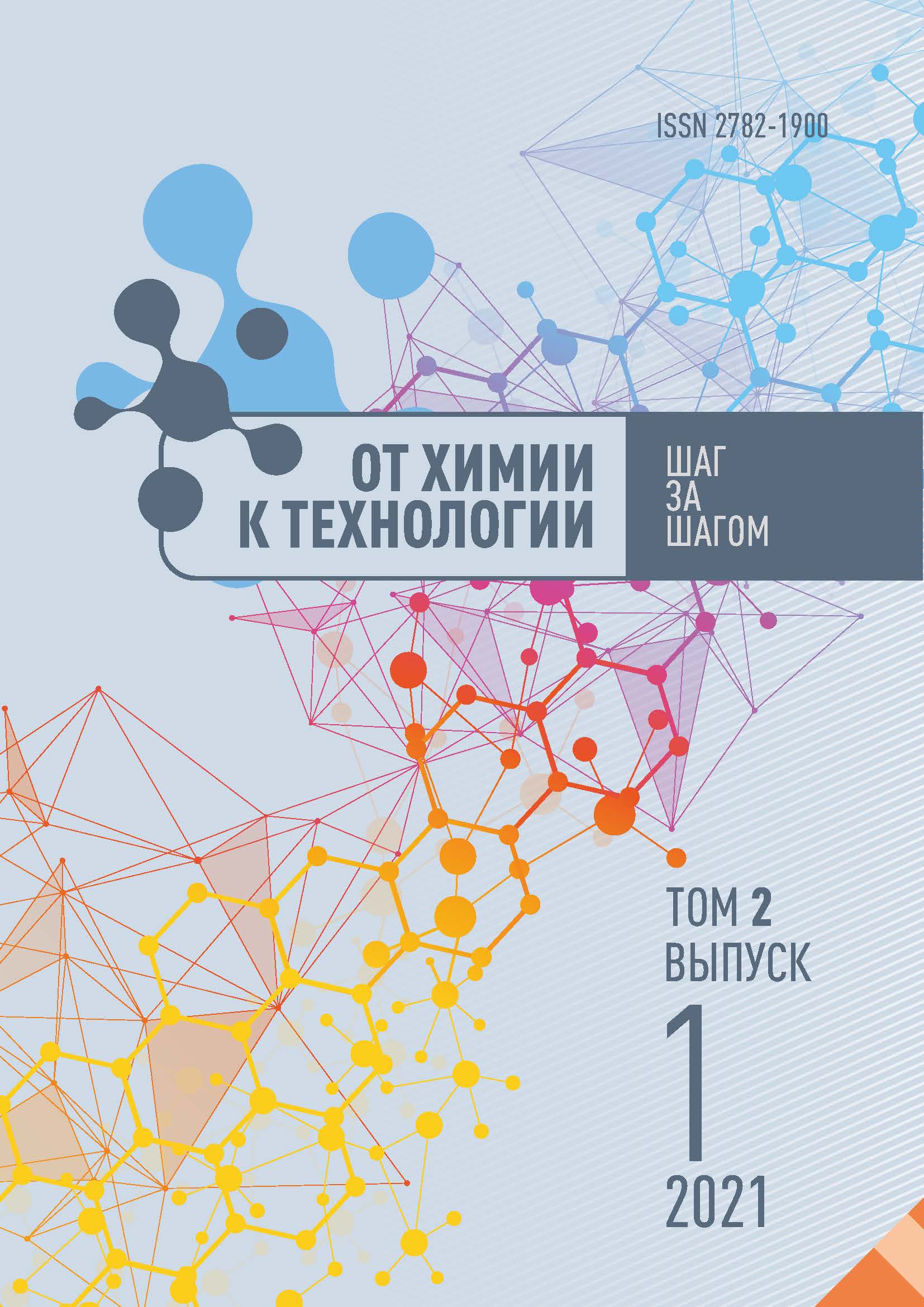Yaroslavl, Yaroslavl, Russian Federation
Yaroslavl, Yaroslavl, Russian Federation
employee from 01.01.2009 until now
Yaroslavl, Yaroslavl, Russian Federation
Yaroslavl, Yaroslavl, Russian Federation
UDC 547-327
A simplified two-stage method was developed for the preparation of 2-aryl-3-bromoindole-5,6-dicarbonitriles from 2-aryl-1-hydroxyindole-5,6-dicarbonitriles, based on direct bromination with bromine and subsequent dehydroxylation of the resulting intermediates.
bromination, brom, N-bromosuccinimide, 1-hydroxyindole-5,6-dicarbonitrile, 3-bromoindole-5,6-dicarbonitrile
1. Chirkova Zh.V., Kabanova M.V., Filimonov S.I., Abramov I.G., Petzer A., Petzer J.P., Suponitsky K.Yu. An evaluation of synthetic indole derivatives as inhibitors of monoamine oxidase. Bioorganic and Medicinal Chemistry Letters. 2016. V. 26. P. 2214. DOI:https://doi.org/10.1016/j.bmcl.2016.03.060
2. Chirkova Zh.V., Kabanova M.V., Filimonov S.I., Abramov I.G., Petzer A., Hitge R., Petzer J.P., Suponitsky K.Y. Optimization of pyrrolo[3,4-f]indole-5,7-dione and indole-5,6-dicarbonitrile derivatives as inhibitors of monoamine oxidase. Drug Development Research. 2019. V. 80. Issue 7. P. 970-980. DOI:https://doi.org/10.1002/ddr.21576.
3. Somei M., Sayama Sh., Naka K., Shinmoto K., Yamada F. Creation of New Promoters for Plant’s Root Growth: Its Application for the Syntheses of Vulcanine and Borreline, and for Combating Desertification at Gobi Desert in Inner Mongolia. Heterocycles. 2007. V. 73. P. 537. DOI:https://doi.org/10.3987/COM-07-S(U)31.
4. Motuhi S.-E., Mehiri M., Payri C. E., La Barre S., Bach S. Marine Natural Products from New Caledonia. A Review. Maine Drugs. 2016. V. 14. P. 58. DOI:https://doi.org/10.3390/md14030058.
5. Poirier M., Goudreau S., Poulin J., Savoie J., Beaulieu P.L. Metal-Free Coupling of Azoles with 2- and 3-Haloindoles Providing Access to Novel 2- or 3-(Azol-1-yl)indole Derivatives. J. Organic Letters. 2010. V. 12. N 10. P. 2334-2337. DOI:https://doi.org/10.1021/ol100685p
6. Kamlah A., Bracher F. Phthalocyanines: The Need for Selective Synthetic Approaches. European J. of Organic Chemistry. 2020. P. 2708–2719. DOI:https://doi.org/10.1002/10990690(200008)2000:16<2821:AID-EJOC2821>3.0.CO;2-2.
7. Urbani M., Torre G., Nazeeruddin M.K. Tomaґs T. Phthalocyanines and porphyrinoid analogues as hole- and electron-transporting materials for perovskite solar cells. Chemical Society Reviews. 2019. V. 48. N 10. P. 2738-2766. DOI:https://doi.org/10.1039/c9cs00059c.
8. Korepanov V.I., Sedlovets D.M. Recent Advances in 2D Polymeric Phthalocyanines: Synthesis, Characterization, Applications and New Challenges J. Macroheterocycles. 2019. V. 12. N 3. P. 232-243. DOI:https://doi.org/10.6060/mhc190864s
9. Aykanat A., MengZh., Benedetto G., Mirica K.A. Molecular Engineering of Multifunctional Metallophthalocyanine-Containing Framework Materials. J. Materials Chemistry. 2020. V. 32. N 13. R. 5372–5409. DOI:https://doi.org/10.1021/acs.chemmater.9b05289
10. Song S., Sun X., Li X., Yuan Y., Jiao N. Efficient and Practical Oxidative Bromination and Iodination of Arenes and Heteroarenes with DMSO and Hydrogen Halide: A Mild Protocol for Late-Stage Functionalization. Organic Letters. 2015. V. 17. P. 2886-2889. DOI:https://doi.org/10.1021/acs.orglett.5b00932.
11. Chhattise P.K., Ramaswamy A.V., Waghmode S.B. Regioselective, photochemical bromination of aromatic compounds using N-bromosuccinimide. Tetrahedron Letters. 2008. V. 49. P. 189-194. DOI:https://doi.org/10.1016/j.tetlet.2007.10.126.
12. Huibin Shao, Xiaopei Wang, Yanyan, Wang Yuanyuan Yue Ke Wang, Qinghu Tang, Kelei Zhuo, Jianming Liu. BF3⋅Et2O-Promoted Aerobic Bromination of Heteroarenes with LiBr as the Bromination Sources. Chemistry Select. 2019. V. 4. N 31. P. 8942-8945. DOI:https://doi.org/10.1002/slct.201902492.
13. Mendiola J., Minguez J.M., Alvarez-Builla J., Vaquero J. Reaction of 2-Bromomethylazoles and TosMIC: A Domino Process to Azolopyrimidines. Synthesis of Core Tricycle of the Variolins Alkaloids. J. Organic Letters. 2000. V. 2. P. 3253. DOI:https://doi.org/10.1021/ol0062087.
14. Konus M., Çetin D., Yılmaz C., Arslan S., Mutlu D., Kurt-Kızıldoğan A, Otur C., Ozok O., Algso M., Kivrak A.Synthesis, Biological Evaluation and Molecular Docking of Novel Thiophene-Based Indole Derivatives as Potential Antibacterial, GST** Inhibitor and Apoptotic Anticancer Agents. J. ChemistrySelect. 2020. N 5. P.5809 –5814. DOI:https://doi.org/10.1002/slct.202001523.
15. Chirkova Zh.V., Filimonov S.I. Abramov I.G. C-3 Bromination of 1-Hydroxypyrrolo[3,4-f]indole-5,7-diones. Russian Journal of General Chemistry. 2019. V. 89. N 6. R. 1347–1352. DOI:https://doi.org/10.1134/S1070363219060331.
16. Chirkova Zh.V., Kabanova M.V., Filimonov S.I., Smirnova E.A. General synthetic method for NH-indoles starting from N-hydroxyindoles. Russian Chemical Bulletin. 2019. V. 68. N 6. P. 1196–1199. DOI:https://doi.org/10.1007/s11172-019-2539-7.







